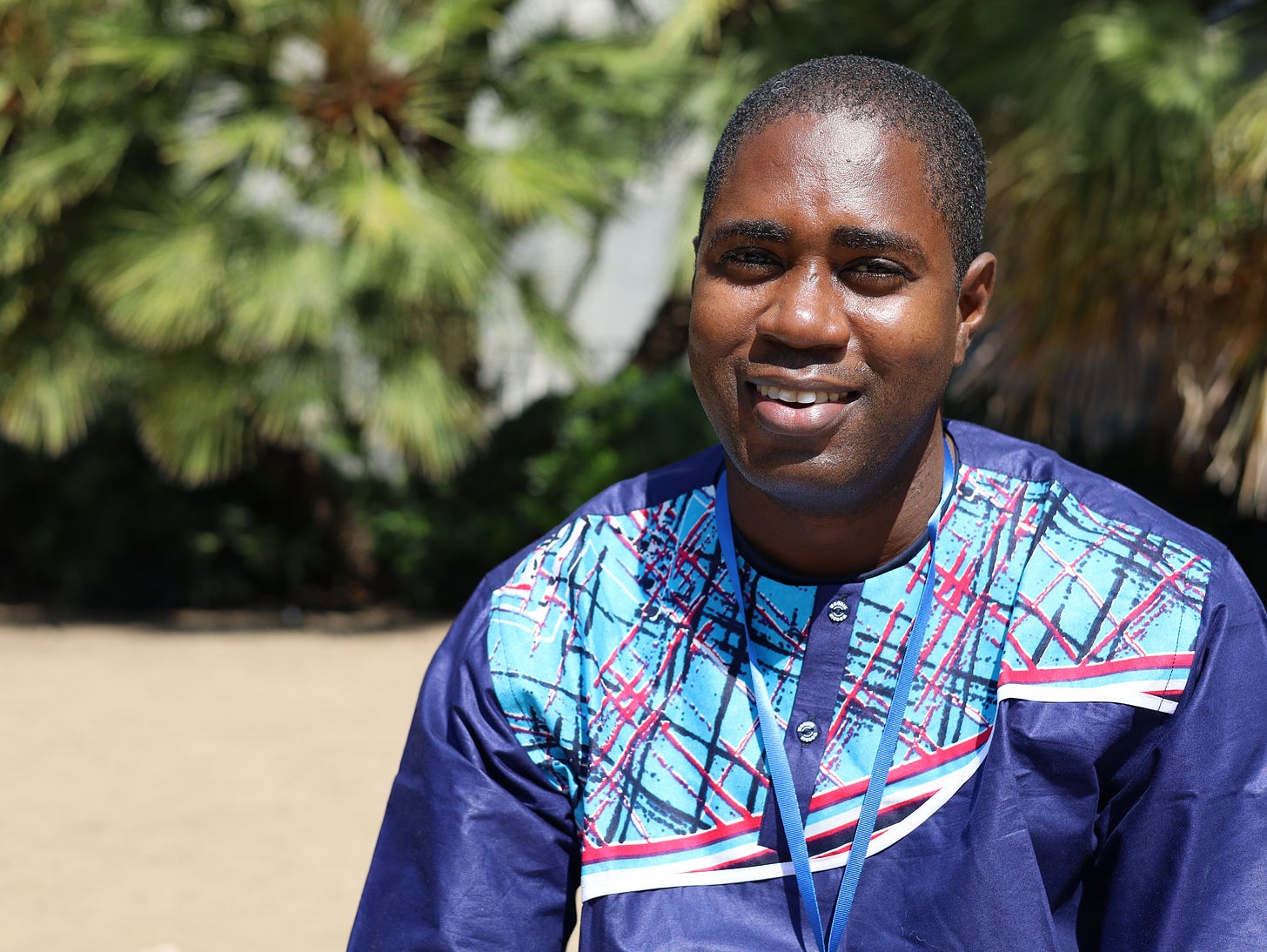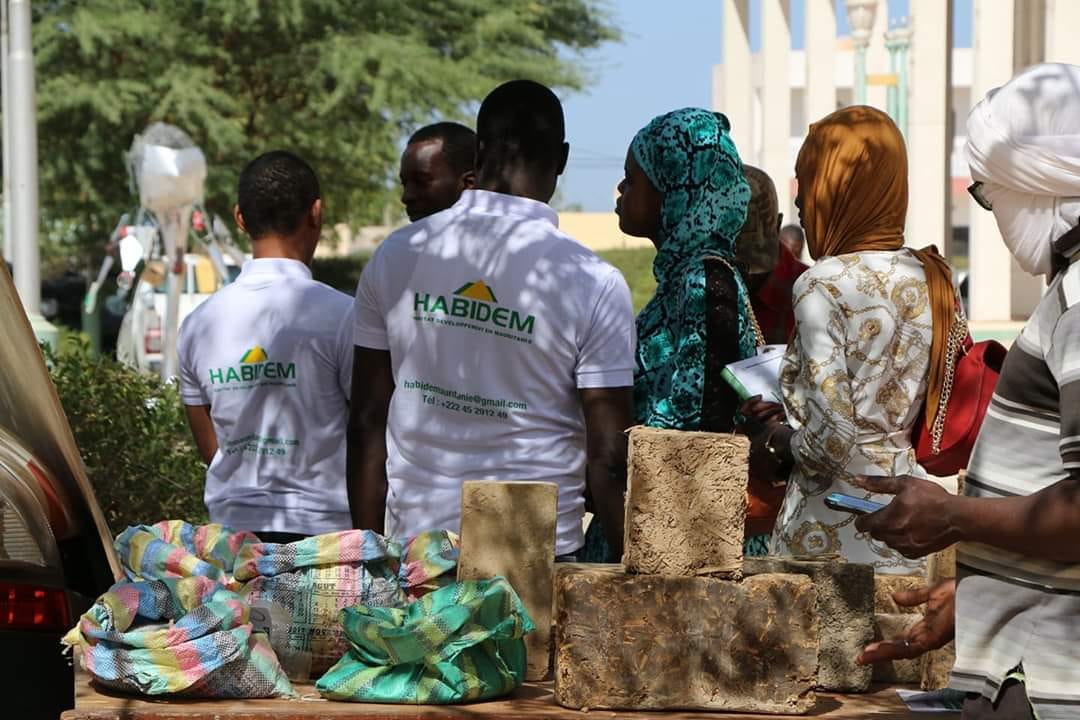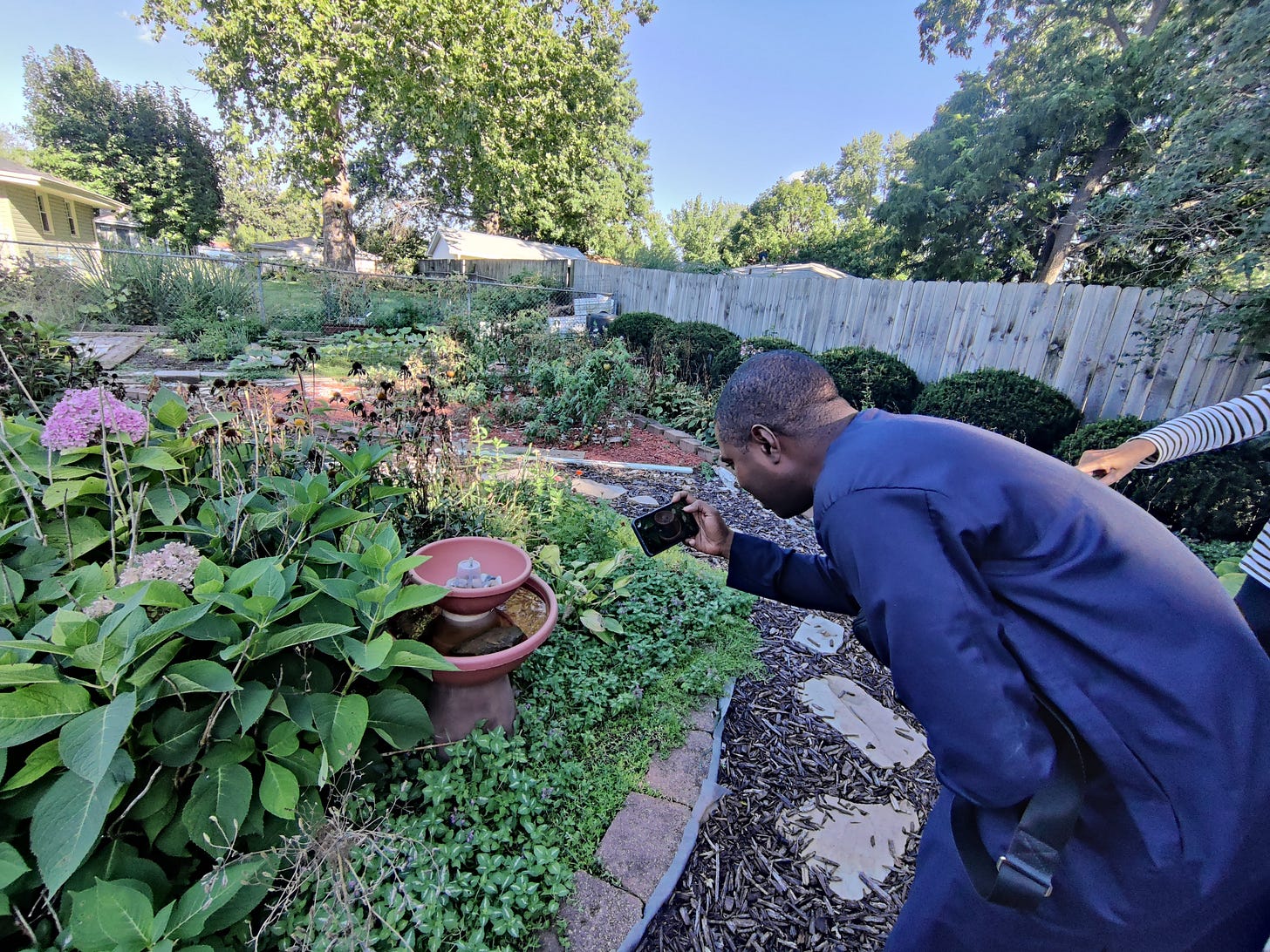“We need to think climate change as an opportunity, not just a problem.”
A Mauritanian agronomist on how to get people to care about climate change
For the past two weeks, I’ve had the privilege to travel to parts of the U.S. with an awesome – and inspiring – group of people to learn more about the efforts by federal and state-level governments and civil society to tackle climate challenges affecting the country.
So far, the three-week exchange programme has taken us to Washington DC, Des Moines and Sacramento. We’ve met government officials, researchers, academics, and activists for candid conversations about what the U.S. is doing – or not doing – to face the existential threat.
It has given me a unique insight into the sheer drive and commitment of the people on the frontline of climate action, as well as the shortcomings of the system.
What I have found equally insightful are the experiences and ideas of the nine other folks with whom I’m sharing this journey. One of them, a 39-year-old Mauritanian agronomist, Mamoudou Touré, kindly agreed to be featured in Thin Ink.
I’m changing the format a bit this week, however. Instead of the usual Q&A format or a story, I’m presenting this mainly as a first-person account, with a bit of an introduction and context here and there, which are italicised so you can easily see which is my voice and which is his. This is partly for flow and partly because I thought it makes his story and comments more compelling. Happy reading!
“The needs are huge, but the potential is also huge.”
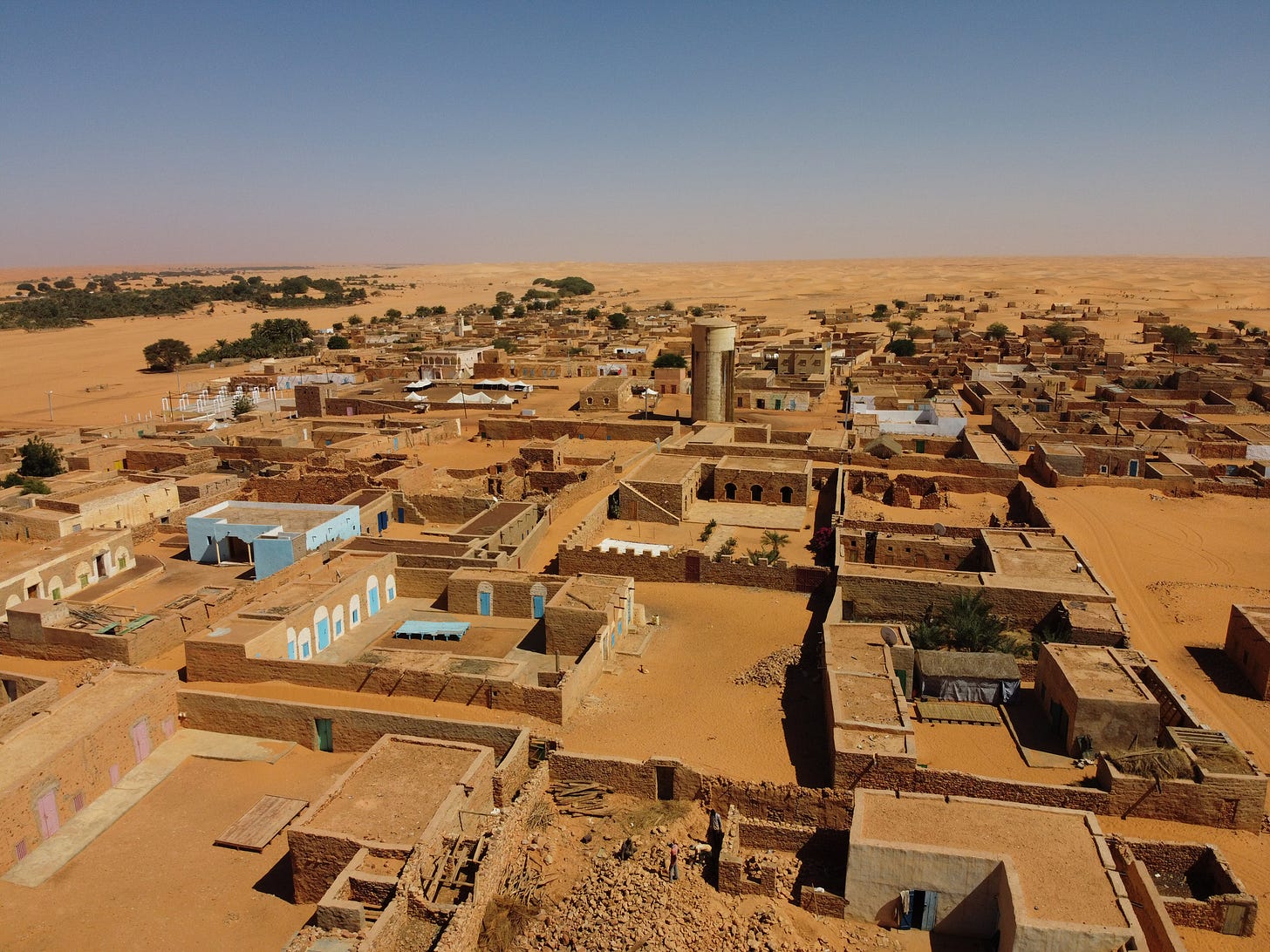
“In Mauritania, everyone comes from a farming family because traditionally this was the main activity, but things have changed. So, I'm not really from an agricultural family, and I came into this field accidentally.
“I studied in Mauritania, then in Morocco, and then went to France. But (studying agriculture) was not my first choice. I don’t even remember what my first choice was – a doctor or working in IT or something like that – and (agriculture) was maybe the second or the third.
“But even as a kid, I was very interested in trees, nature and the environment. So, I have never regretted this choice. I like to help people, and this is a perfect way to do it. We have some agricultural problems and food shortages, so I find it really interesting to help fight those issues.
“I used to go to places where people are very poor. Even now, I'm not living in a big city, and I can tell you that people suffer daily. You know, Mauritania is a country of desert, and agriculture is suffering from water shortages and climate change. For example, this year, we have floods, and you see a lot of water, but maybe in two years, there will be a drought.
“This is the kind of problem that we have. The needs are huge, but the potential is also huge. I'm working on a project to provide infrastructure so the farmers can get water for irrigation. But even when you help about 300 people, you can be sure you should be helping 1,000 more. We need more concrete projects to implement in rural areas where we create wealth.
“The people in the region live next to the river. They’re all farmers or very close to farming families, and their livelihoods depend on it. This is the paradox. They have water next to them. They have land. But they have no infrastructure to bring water from the river to where they want to grow crops.
“And our farming systems are very old. We need to modernise. We need to have some practices that match the climate reality because even those small farmers tend to use pesticides, which is an easy way to grow crops. Still, there are consequences – the degradation of our land, pollution of our aquifers and even the river.
‘The system is perverse. You think you are producing, but what you produce is unhealthy and terrible for the environment. Even in terms of money, perhaps it doesn't bring in enough. We must shift mindsets completely… from conventional agriculture to a more sustainable one.’
From Irritant to Opportunity
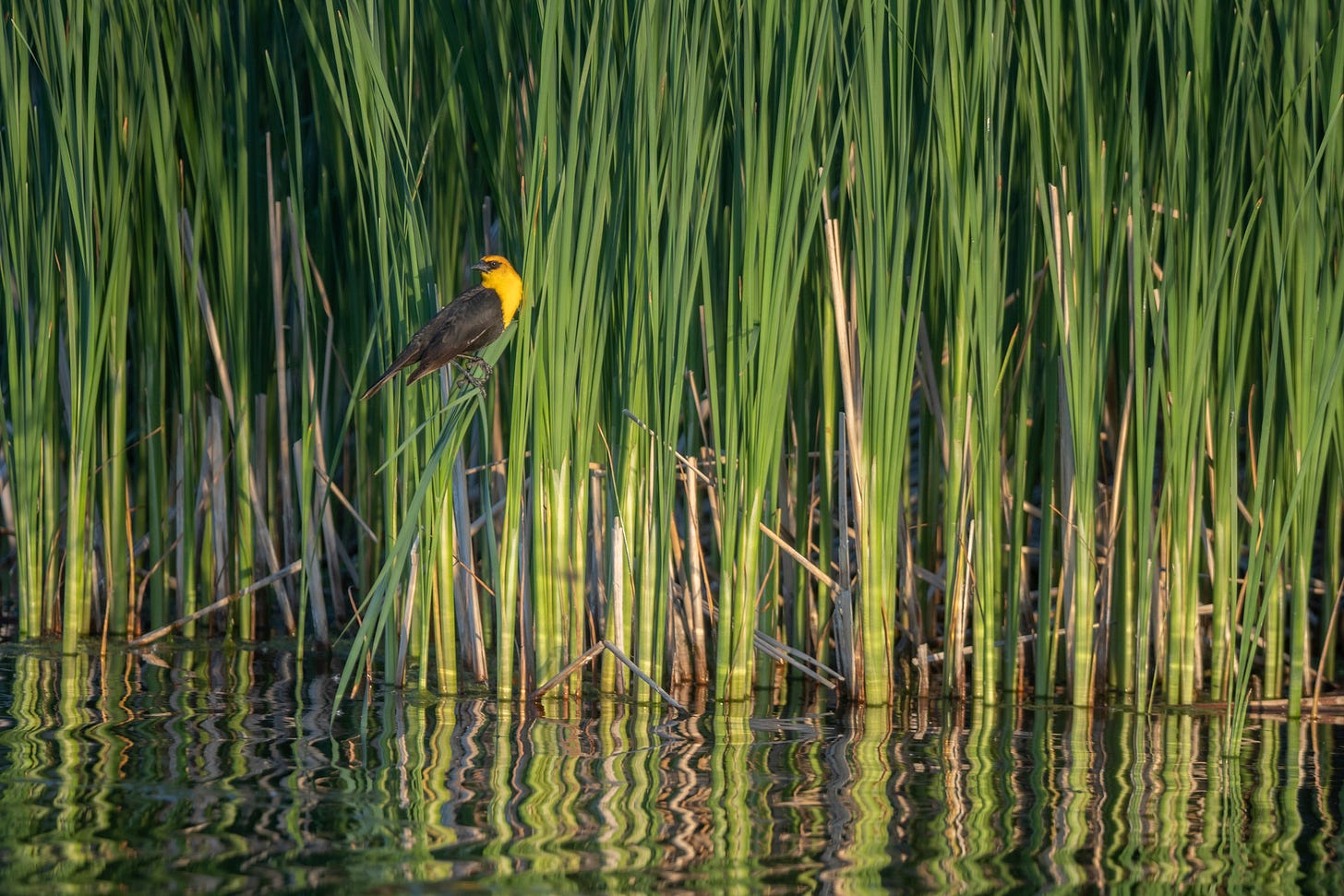
The combination of COVID-19-induced economic slowdowns and climate extremes have battered the country, officially known as The Islamic Republic of Mauritania, in recent years. According to the FAO, the United Nations’ food and agriculture agency, 45% of Mauritania’s population were either reducing the quality and quantity of meals or going without food for a day or more between 2019 and 2021.
Food security concerns have been an issue for decades in this vast and sparsely populated country in North Africa, where a significant portion of its land is desert. Since the 1970s, the government and international donors have warned of chronic cereal production deficits, partly due to the country’s heavy reliance on rainfed agriculture, which is highly vulnerable to the vagaries of weather.
Subsequent governments have been working to provide irrigation to small-scale farmers ever since.
During his job as a director of a sugar company, Mamoudou came across Typha, an invasive plant that grows uncontrollably along the waterways in Mauritania. Here farmland is at a premium, and farmers are already struggling to get water.
“Mauritania is a country that is two-thirds desert. So, the only agricultural land is next to the river where Typha grows. We have like 25,000 hectares of it, and we didn’t have a solution for it. People were cutting it because it was a problem, but they were not using it for anything.
“Even if you cut, two months later, it's like you have never cut it at all, and when you have it in water, you cannot irrigate the way you want. It also creates conditions for malaria.
“So the idea was to turn a problem into a solution. Oumar Wélé is a close friend of mine and he went to learn about buildings in France. When he returned, he often talked about using local materials, and people often told him, ‘Are you crazy? You go to France, and you talk about local materials!’
“But what I found interesting is that he has an innovative approach, combining what we have traditionally with what he learned in school. So, we decided to combine our two fields of expertise. I’m an agronomist, and I was having a problem with Typha. He’s a man keen to build with local materials and wants to use Typha.”
His partner had already devised techniques to cut the Typha so they could mix it with mud and put it in a mould to turn it into lightweight bricks suitable for the local environment and conditions.
Mamoudou, who now works as a technical assistant for an irrigation project, joined the company HABIDEM in 2017 and soon after, won a Sahel-wide entrepreneurial award co-organised by The World Bank.
They now employ four young people, and although they juggle HABIDEM and their current day jobs, Mamoudou is optimistic about the future. The suitability of Typha as a construction material has also been noted in other Sahelian countries struggling to control this weed.
There are now programmes in neighbouring Senegal such as the Typha Fuel Construction West Africa (TyCCAO) and another by Alstom Foundation in the Tocc Tocc Community Nature Reserve.
“In Mauritania, it’s expensive to build a house. Most people don't have the means to afford the materials, but the demand is very high. Everyone wants to have their own home. With Typha, it’s about 30% less expensive than conventional buildings. The second thing is that it creates energy efficiency. Our country is very hot, but we don't need air conditioning while using local materials and natural airflow.
“(The Typha bricks) can also last a very long time, almost as long as the conventional materials we use. There is an African organisation called African Organization of Intellectual Property (AOPI) and we have a license from them for Typha.
“You know, when you talk about money, people understand. We can say, ‘Oh, there’s climate change, don't use chemicals. The synthetic material is not good for the environment.’ But okay, what are you proposing if we don’t use them? What do you have? Because (the people) are poor.
“So we need to think climate change as an opportunity, not just a problem. We can create jobs, well-paying jobs. You can become rich. That kind of message people understand. We are training people on how to cut and use the Typha. These are green jobs.
“Right now, we have maybe three or four sample houses built from Typha, but we have a contract with the army, and people are starting to realise that it is possible and cheaper. I think in the coming years, things will change a lot.”
You can listen more about the company’s journey on AfricaX’s Podcast or watch the interview here.
A Climate Movement By and For Youth
Mamoudou met his partner in 2015 when he joined the Mauritania Chapter of the Youth Climate Movement. This movement brings together young Mauritanians with different expertise who are concerned about climate change. They voluntarily work to protect the environment.
“Just before COVID-19, we organised a climate action week with seven activities. We had a climate camp, and the idea was to bring about 100 young people together to have COP (the annual UN Climate Change negotiations) simulations so young people could understand that the interests of Asia, the United States, and the European Union may be different.
“We also have the Green Expo where we exhibit Typha bricks because people understand when they see it.
“You know, in my country, people tend to think climate change is a Western thing, that it's far from us, and we have other issues like food security. But this is all related. So, the concept of Clim-Art is to bring artists together, where we explain what climate change is all about and how they can play a role. If they understand it better, they can influence people because people are listening to their music.
“During that week, we also had March 8, which is International Women's Day, and we have activities showing they are the most vulnerable and affected by climate change issues, so their voices must be heard.
“In the future, we want a platform, a website, where you can find a range of activities including agriculture, eco-construction and energy efficiency. We want a document to explain the IPCC (The Intergovernmental Panel on Climate Change), the UNFCC (The United Nations Framework Convention on Climate Change), and their actions. The goal is for people to come and learn.
“The message we're trying to deliver is that this is a sustainability problem. What farmers are doing, they cannot continue to do the same for the next 10 or 20 years. What about their kids? If the lands are destroyed, what are they going to do? This is what we have.
“We need crops that match our needs. We ate little rice in the past years, but now we are oriented towards a monoculture of rice, which is dangerous for the environment because it kills biodiversity. It destroys the ecosystem we have. We need to have a holistic approach.
“This year, the COP is in Africa. We are working on a process where many countries will have caravans that will travel and map climate vulnerabilities in the different regions.
“We have a lot of bright ideas… the only thing we don't have is the money. But we don’t even need to manage the funds. (The donors) can keep the money. We ask them to bring guests to Mauritania for our movement and pay for their stay in the country. We need our guests to be comfortable.
“This way, we don’t have to manage the money or the expenses and don’t have to complete reports. We don’t have time for that. This approach also creates trust.
“By nature, I'm optimistic, so I’m confident about the future. But we need to try harder. We need to get people to understand climate change and how it creates opportunities and well-paid jobs and is sustainable.
“It’s about understanding the environment and reflecting on what we need. We don't need buildings in Mauritania like here in the U.S. That doesn't make sense. So you don't need to copy and paste. To create a model of development we need, we need to build with what we have.”
As always, have a great weekend! Please feel free to share this post and send tips and thoughts on twitter @thinink, to my LinkedIn page or via e-mail thin@thin-ink.net.


